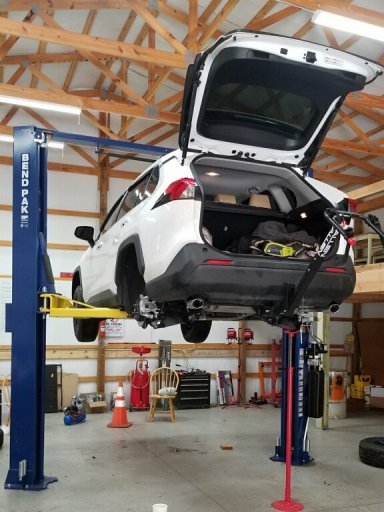
Member III
Hey! As I outfit my new Rav4, I am finding the rear is starting to sag a bit--it is about an inch lower than stock right now. I have added a ~53lb hitch, another ~12lb of bike carrier (pretty much full-time), and easily 125-150lb of gear in the back that I've always carried in my daily driver like tools, recovery gear, and my air compressor. Soon I'll be looking into mounting my hi-lift jack and recovery boards on the roof (perhaps not daily), adding another ~45lbs for a total of ~250lb added to the vehicle.
I don't necessarily want a complete lift--just enough to basically return to factory rake.
So, my first thought was to ask one of the two companies making lifts if I could buy just the rear coil spacers, which should return maybe .75 to 1" to my current height and be perfect. I am assuming I could do this for maybe $200-250 installed.
Then, I had the 2nd thought of adding airbags to the rear, which would allow me to run a modest setting if I take the gear out, pump them up when loaded, and more easily remove them if necessary later on. I already have a 12v compressor, so I'd be looking at simply the $90-100 for the standard airbag kits.
I don't know if anyone makes complete aftermarket coils for these vehicles or at least knows which existing springs may be compatible.
Thoughts?
I don't necessarily want a complete lift--just enough to basically return to factory rake.
So, my first thought was to ask one of the two companies making lifts if I could buy just the rear coil spacers, which should return maybe .75 to 1" to my current height and be perfect. I am assuming I could do this for maybe $200-250 installed.
Then, I had the 2nd thought of adding airbags to the rear, which would allow me to run a modest setting if I take the gear out, pump them up when loaded, and more easily remove them if necessary later on. I already have a 12v compressor, so I'd be looking at simply the $90-100 for the standard airbag kits.
I don't know if anyone makes complete aftermarket coils for these vehicles or at least knows which existing springs may be compatible.
Thoughts?





